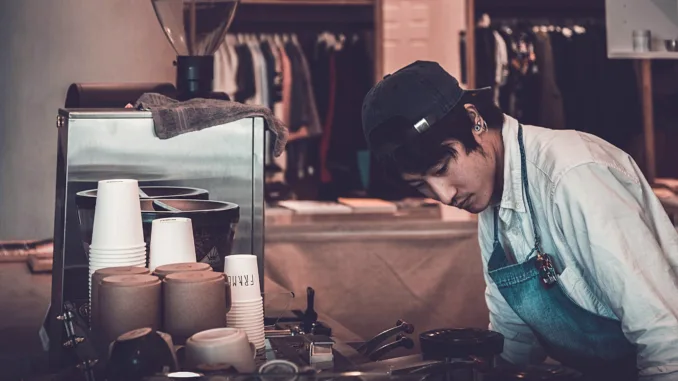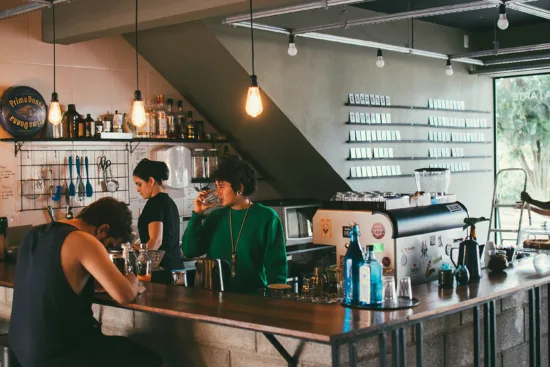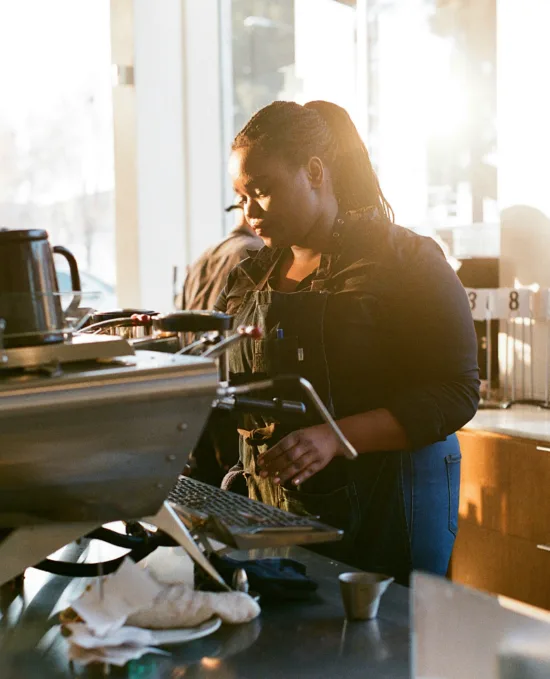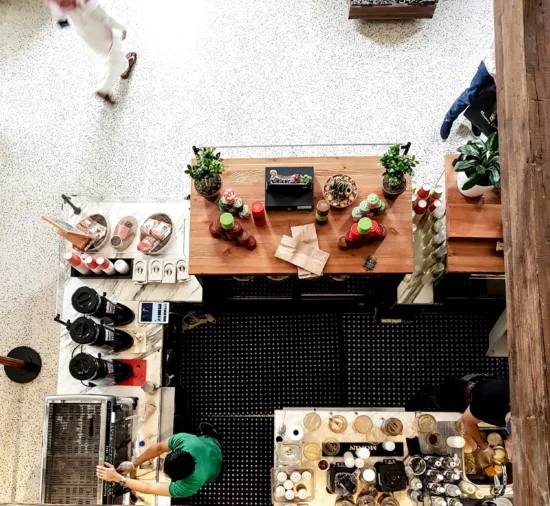
While it’s ideal to have multiple staff on bar for safety reasons, some café owners are concerned about making enough revenue to keep up.
BY EMILY JOY MENESES
BARISTA MAGAZINE ONLINE
Featured photo by Waqas Saeed
In the first part of “Let’s Talk About: Baristas Working Solo,” we discussed the potential risks that come with scheduling café employees to run the shop alone. In this second installment, we’ll shed light on the budgeting difficulties that small-business owners are facing, how these limitations are affecting scheduling, and how to start working around them.
Budgeting Concerns
As I mentioned in part one of this article, the first coffee shop I worked at consisted of a small team of baristas who mostly preferred to work alone. But when I look back on my time there working solo shifts as a young barista, I can’t remember whether working alone really was the team’s idea, or if it was subtly encouraged by the café owners, who may have been looking to cut costs. While employee safety should undoubtedly be at the top of a shop’s priorities, some café owners are bringing up the fact that many small businesses are working with very tight profit margins.

Matt Powers, owner of Ventura, Calif.’s Calioh Coffee, raises some important questions: “I’m all for double staffing and security measures—we do this at (our shop) in Ventura County. However, can we discuss the cost of labor to support double staff?”
“If the barista wage (in California) is $16, then labor costs about $25 per hour after taxes and insurance. Considering the 30/30/30 rule, double staff would require a per hour minimum of $150 gross revenue,” Matt continues. “If two is the minimum acceptable staffing, then it follows that an ‘average’ coffee shop open from 7 a.m.-3 p.m. would need to earn $1,350 gross revenue per day, or $490,000 per year. How many cafés are earning that much? My café is a year old and we’re at a $1,127-per-day average.”
Making Hard Choices
Matt goes on to explain the difficult position that this puts café owners in. “If revenue doesn’t support double staffing and the local market doesn’t have the volume of customers to create it, what does the owner responsibly do?” he asks. “(Do they) close their shop and eliminate the barista’s job? Or keep it open, taking necessary safety precautions? I’ll say this—if the café is under $1,350 per day, I can guarantee that no one is getting carpal tunnel or any other repetitive work injuries since there’s simply no volume of work great enough to substantiate that.”

Finding a Work-Around
Matt explains how he’s been able to schedule employees in strategic, cost-efficient ways—without putting baristas’ comfort or safety at stake. “From my experience, here’s some parameters I’ve personally tested: One barista is good for about 10 transactions per hour. Any block of time where the transactions per hour exceed 10 for three hours or more, you need to plug in another person,” he shares. “Same can be said for revenue. A barista should be able to handle $100 per hour solo. Same three-hour block rules apply—over $100 for three hours or more, and you need another person during that shift.”
He also explains how strategically choosing equipment that works for your bar flow can help with staffing issues as well. “We just upgraded from a two-group semi-automatic La Marzocco to a three-group automatic and a PuqPress, and we can now handle $150 solo—but we don’t do solo. We always have two (people) on staff and three at peak from 8-11 a.m.,” he explains. “We used to have four at peak, but the equipment upgrade saved us from needing that extra employee.”

Taking Precautions
Matt’s methods are helpful for addressing the physical strain that can come from minimal staffing—but we still need to address the risk of altercation with customers. For café leaders making scheduling decisions, it’s best to first open up a conversation between you and your team members: What preferences do your employees have? What issues and potential dangers have they run into before, and what do they desire in order to feel safe while working? By better understanding the unique culture of your shop and what your baristas’ day-to-day looks like, you can better accommodate your team’s needs.
And for baristas who ever do find themselves working solo for whatever given reason, there’s a number of precautions that can be taken to feel more supported and secure. For example, it’s good to have someone nearby who you can call if you were to need help. If there are no other employees present at your shop, you can try connecting with neighboring businesses and their teams. In addition, café leaders can hold training workshops where baristas are taught ways to de-escalate potentially dangerous situations.
Next week, we’ll release the third and final installment of “Let’s Talk About: Baristas Working Solo”, where we’ll take an in-depth look at de-escalation tactics that coffee shop workers can use to reduce harm while working alone.
ABOUT THE AUTHOR
Emily Joy Meneses (she/they) is a writer and musician based in Los Angeles. Her hobbies include foraging, cortados, vintage synths, and connecting with her Filipino roots through music, art, food, and beverage.
Subscribe and More!
Out now: It’s the August + September 2024 issue of Barista Magazine! Read it for free with our digital edition. And for more than three years’ worth of issues, visit our digital edition archives here.
You can order a hard copy of the magazine through our online store here, or start a subscription for one year or two.





